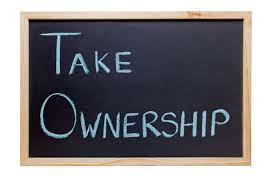P racticing a musical instrument regularly is tough for most kids.
racticing a musical instrument regularly is tough for most kids.
That does not mean that when your child is giving you a hard time about practicing it means that they hate music and want to quit. They just don’t like practicing, and that’s okay…for now.
There are many ways to get your child to practice. You can force them, create a sticker chart, or even bribe them (yes, this works — don’t feel guilty if you do it). Some days will be easier than others, and sometimes you will have to lose the battle in order to win the war. But eventually, your goal should be to give your child ownership of their own learning.
What is “ownership of learning”?
Basically, when a student understands “why”, “how”, “where” and “when” to practice, they have been given power. They will feel a sense of responsibility, which will then lead to self motivation and routine. Ideally we want our children to have ownership over their own learning in every aspect of life, and music education is a wonderful way to teach this!
Why Practice?
Let’s use a sports analogy. Basketball players must consistently work out in the weight room, run miles a day, and shoot hundreds of free throws a week in order to be physically and mentally ready for each game. Musicians use small muscles (embouchure, fingers, etc.) that need a constant regular workout as well. Especially at young ages, musicians’ muscles are developing very quickly with regular practice, so improvement is very obvious. Students need to practice so they are ready for the game (performance). The more “performances” (which can include Friday night dinner concerts at home), the more likely your child will understand the need for practice, so keep that in mind!
When to Practice?
Ideally, practice should happen every day. In our house, we are happy with 5 days a week for our young children. Sometimes we make it to seven, but if it’s late and our kids (or the parents!) are tired and cranky, we have a two-day buffer. That works for some and not others, but everyday practice may not happen for beginners or older students who have decided that music is a hobby. The bottom line is that we as parents need to help our children get in the habit of practicing, just like they brush their teeth and do their other homework.
Practice should occur at the same time every day, if possible. Making practice part of the child’s daily routine is key. Getting started is always the toughest part of practicing; I always thought that taking the instrument out of the case was the toughest part — when it came out and I started playing I was set. Purchasing an instrument stand is a great idea. That way the instrument is always out and ready to be played!
How Long Should My Child Practice?
I am a big fan of the “10 minute rule”. 10 minutes of practice a day (for beginners) is better than nothing, and 99% of the time 10 minutes turns into 20 minutes! As long as your teacher gives clear assignments, ten minutes will certainly extend to a half an hour easily.
Many school music teachers send home practice charts that have to be filled out and returned each week. Awards may be given out for more time on task, or total time practiced each month. Pedagogically speaking, I believe this emphasizes quantity over quality, but it does work for many students.
If you are the type of parent who needs concrete numbers, try this:
Beginning students = 10 minutes/day*
Middle school students = 1/2 hour a day*
High school students = 45 minutes – 1 hour a day*
*If your child shows passion at a young age, or they are getting pretty serious by middle school, these numbers should as much as triple.
If the practice is goal related (the child knows they need to learn X scale, X etude, and X measures of a band piece), the time will take care of itself. Sitting down to practice with specific goals is crucial to successful growth.
Where to Practice?
Ideally, parents should carve out a semi-quiet area with a chair and a sturdy music stand. There should be proper lighting and a place to store extra strings, rosin, music, pencils, markers, notebook and a metronome. There should be minimal distractions such as TV, radio, other children, pets or telephone.
How to Practice
The sooner a child learns how to practice, the better!
The best tip I can give to parents is this:
Muscle memory and tempo are mutually exclusive. That means everything must be practiced VERY SLOW in order for the skill to be successfully “programmed” into the body.
This is very difficult for young children, especially when they are learning to play a song that they recognize. **If mistakes are happening, it is more than likely that the piece is being practiced at a tempo that is too fast.**
Students shouldn’t always start at the beginning of a piece each time they sit down to practice it. Work should be done on small “snippets” that give them trouble; practicing them slowly then speeding them up. Hard sections should be broken down into small bits, perhaps even to the point where they are playing single notes. These sections should be repeated many times until the music becomes easy to play. Then the student should put the piece back together and gradually bring it up to tempo.
Sometimes practice happens without making sounds. Students should take time to figure out the fingering of passages note by note. Any time a mistake occurs, your child should feel free to make a note in the music with pencil.
Practice with a metronome is huge and leads to tons of improvement! Students should set it at a slow count at first, then gradually increase the pulse until they arrive at the final tempo.
Students should make good use of pencil and markers to indicate places where they keep making the same mistake.
A digital recorder or phone is a great tool to use when practicing. Students can record themselves playing so they can hear problems, particularly regarding to rhythm and notes. This is a lot of fun for them to do, so encourage it!
Practice sessions should end by playing beautifully a piece that the student knows well, or anything they want, really.
Practice Games
Making any “chore” a game makes it more desirable.
A lot of fun can be had with just 3 pennies!
First, the student puts three pennies on the left side of the music stand. While practicing a troublesome measure, for every time they play it correctly, they move one penny to the right side of the stand. If they play it again and get it right, they put the next penny on the right side of the stand. If they play it and miss a note or rhythm, then all the pennies go back to the left side. The student must play the measure correctly three times in a row in order to keep the pennies. The next step is to connect the troublesome measure to the measure before it and continue playing.
By the 5th or 6th grade, your child should begin taking ownership over their learning. They need to understand that what you put in is what you get out. It is the parent’s job to get their child to that point by ensuring that practice happens daily. Kids won’t always understand this at a young age, but parents are doing them such a huge favor by not allowing them to quit. At the very least, children will grow up knowing what it takes to truly achieve something, and how to motivate themselves to do things that they might not always want to do.
That is the gift of ownership.








The Five Steps to Perfect Practice
1. CHOP IT UP: only do a manageable size section of music. If it feels overwhelming, make it smaller.
2. Say the rhythms out loud: use whatever syllables you are comfortable with. Understand which notes are long and short.
3. Say the letter names, in rhythm, out loud.
4. FAKE PLAY: say the letter names, in rhythm, out loud, while pretending to play your instrument with your hands/fingers.
5. REAL PLAY: Actually play your instrument, but “fake play” it in your head as you play! This helps you to concentrate and get it right.
Repeat these steps for each section of music you are learning. BONUS: try to get each section right 3, 4 or even 5 times IN A ROW before moving to another section of music!